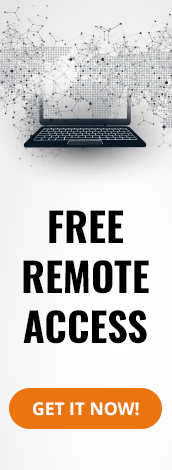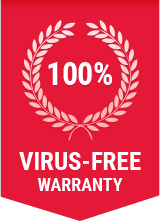What is PICCLP32.OCX?
Originally developed by Microsoft Corporation, PICCLP32.OCX is a legitimate file process and also called as PicClip that is associated with software PicClip. It is located in C:\Program Files by default.
PICCLP32.OCX virus is created when malware authors write virus files and name them after PICCLP32.OCX with an aim to spread virus on the internet.
Affected Platform: Windows OS
How to check if your computer is infected with PICCLP32.OCX malware?
If your system is affected by PICCLP32.OCX malware, you will notice one or the several below symptoms:
- PICCLP32.OCX occupies an unusually large CPU memory
- Erratic internet connection
- Your browser is bombarded with annoying popup ads
- Computer screen freezes
- PC's processing speed suffers
- You are redirected to unknown websites
To pinpoint the virus file location, take the following steps:
Step 1: Press CTRL+ALT+DEL keys at once to open Task Manager.
Step 2: If you notice the file located outside C:\Program Files you should run an antivirus scan to get rid of the malware.
How to remove PICCLP32.OCX malware from system using Comodo Cleaning Essentials?
You can either choose to remove PICCLP32.OCX and other malwares using Comodo Antivirus, or Comodo Cleaning Essentials (CCE) – both of which are absolutely free to download! CCE is a set of computer security tools designed to help you identify and remove malwares and unsafe processes from an infected computer.
To remove malwares using CCE, take the following steps:
1. Check the system requirements and download the feature-rich CCE suite for free.
2. After installation, choose the type of scan you want to perform. CCE offers 3 scan options to get rid of malwares from a PC:
- Smart Scan: Does a scan on critical areas of your system.
- Full Scan: Does a complete scan of your system.
- Custom Scan: Does a scan only on selected items.
The process to initiate the above mentioned scans are self-explanatory and thus, easy-to-use.
Additionally, it's recommended that you approve of any updates that the CCE will prompt you about to ensure it does a better job of identifying all the latest threats.
3. Click 'Next' to view the results.
Regardless of the type of scan you choose, the results will sometimes show false positive (flagging files that are actually safe), which has to be ignored. Only select the files you want to get rid of.
4. Click 'Apply' to apply the selected operations to the threats. The selected operations will be applied.
| No. | Company | File Type | SHA1 | MD5 | Malware Name |
Digitally Signed |
File Version |
Product Version |
Submitted From |
Malware Behavior |
|---|
- 4 items per page
- 8 items per page
- 16 items per page
- 32 items per page
| No. | Company | File Type | SHA1 | MD5 | Digitally Signed |
File Version |
Product Version |
Submitted From |
|---|---|---|---|---|---|---|---|---|
| 1 | Microsoft Corporation | Executable | 709b5b7bfa6bd431 656e7edddb748624 0f79a3c4 |
90502f80c58d513a c3fa15b4e226fdfa |
Yes | 6.00.8418 | 6.00.8418 |  10.224.1.62/32 10.224.1.62/32 |
| 2 | Microsoft Corporation | Executable | d23016948e998e74 44f674478206884b 13040dc7 |
0f37697125669fd1 fb919f3585845965 |
No | 6.00.8169 | 6.00.8169 |  Internal Submission Internal Submission |
| 3 | Microsoft Corporation | Executable | 35e03f07d6ed3627 c51292873814cf59 29fde444 |
483bcb335555ed6f f87ed93ecdd15df8 |
Yes | 6.00.8169 | 6.00.8169 |  Internal Submission Internal Submission |
| 4 | Microsoft Corporation | Executable | 5ea28e5251fa2870 f9b5687fd0271394 afd73591 |
0036d89bb19edcfb e1a809fb31712b8c |
Yes | 6.00.8418 | 6.00.8418 |  United States United States |








